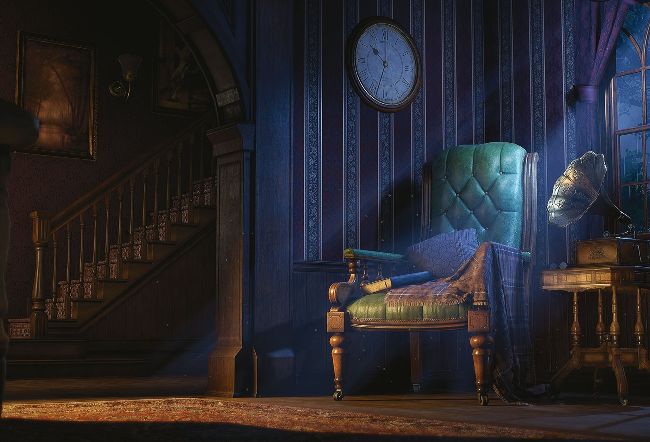MAYA | PHOTOSHOP | ZBRUSH | MARMOSET TOOLBAG | UNRE AL ENGINE | SUBSTANCE PAINTER
CREATE REALISTIC INTERIORS IN UNREAL
Learn the process behind creating this real-time interior video game environment, inspired by a late Vic torian aesthetic

1920s VICTORIAN LOUNGE ROOM Dylan was encouraged to work on smaller, story-driven scenes such as this by former Ubisoft Toronto level artist Billy Matjiunis
In this tutorial we’ll be covering how to create a small-scale interior scene for video games using Maya, ZBrush, Photoshop, Substance Painter and, of course, Unreal Engine. This tutorial will help speed up your work flow between Maya and ZBrush, as well as employ a pipeline that lends itself to quick retopology and baking techniques.
The skills discussed will help you develop more interesting environment compositions, lighting techniques, and improve your overall ability to tell a story through your work. We’ll be going over every thing from preproduc tion through to polishing the final render.
By the end, you should have a clear understanding of the ins and outs of creating a smallscale environment for games, as well as how to utilise the small space available to make a big impression on your viewers.
DOWNLOAD YOUR RESOURCES For all the assets you need go tohttps://bit.ly/3dworld-unity
AUTHOR
Dylan Abernethy
Dylan is a senior 3D environment artist at Compulsion Games. He enjoys creating props, environment art and tutorials.bit.ly/3kZaYci
01
01 BLOCKOUT THE
SCENE IN MAYA
With limited space available in an interior scene, it’s impor tant to make the most of the screen space given. Within the blockout phase for this scene, there were three impor tant steps to keep in mind : create an interesting focal point; supply the scene with multiple areas where light could come into the environment to enhance that focal point; and finally fill the area around the focal point with leading lines that will ultimately draw your at tention back to it. In the case of this scene, that focal point is the chair and table.